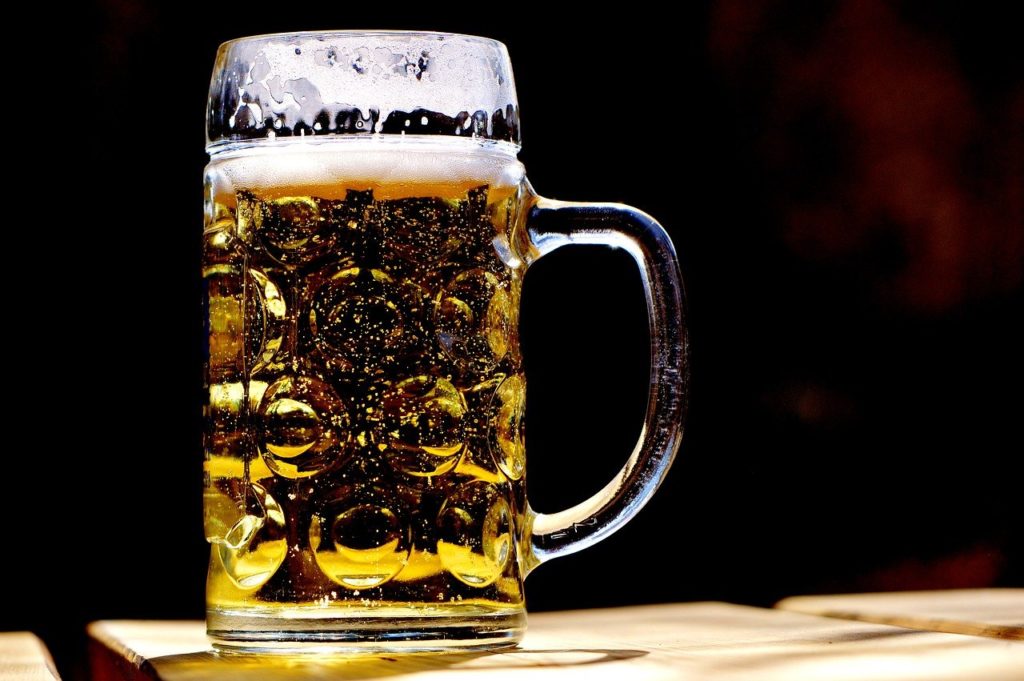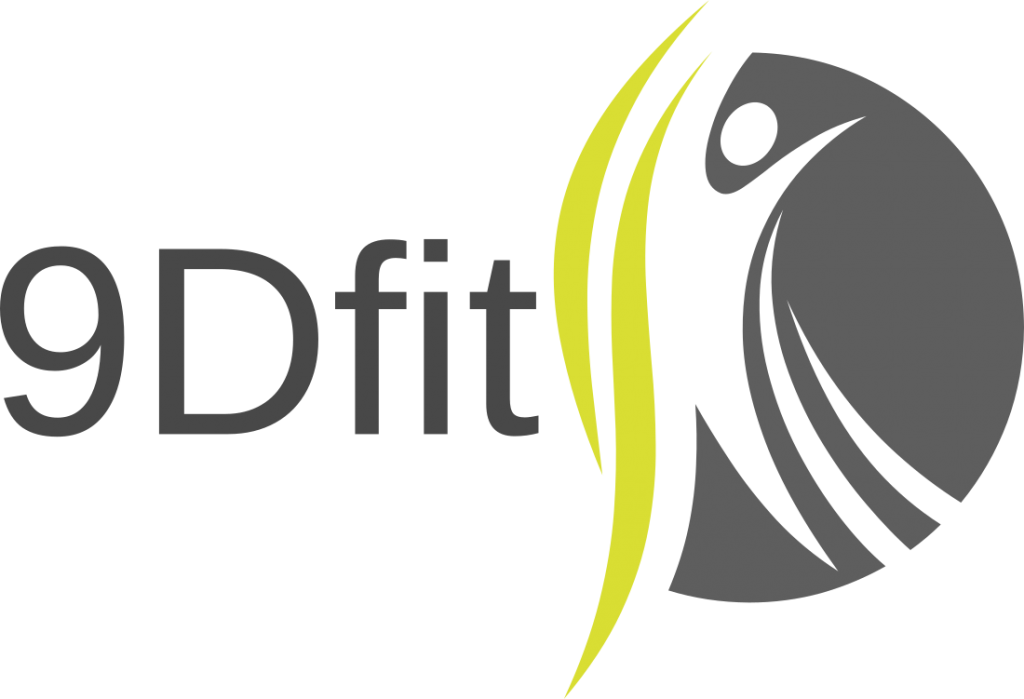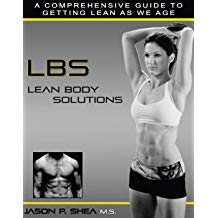By Jason Shea, M.S., CSCS, PICP IV
With the holiday season upon us many of us find ourselves filled with plenty of holiday cheer. This can come in the form of holiday parties, holiday get-togethers, extra helpings of pumpkin cheesecake (or pumpkin pie), sugar cookies, chocolate truffles, and perhaps some “superlative apple pie with homemade vanilla ice cream” and whipped cream:). Never mind the…ahem…“annual, new found appreciation” for beverages including festive ciders and egg nogs, buttered rum cocktails, annual Christmas/Solstice beers, scotch, whiskey, wine and more.
With all of this holiday goodness, our schedules can get jammed, our sleep can be lacking, and our motivation to get to the gym can wane. Combine this with the aforementioned holiday nutrition, and we have a recipe for those “few extra pounds” this holiday season.
In an effort keep from straying too far away from our baseline weight/bodyfat, as beach season (at least for us here in New England) is only 6 months away, here are 9 useful tips to help you to avoid the annual holiday belt loosening!
1. 100 Rep Challenge Workout
How does increased insulin sensitivity sound? How about increased EPOC (Exercise Post Oxygen Consumption), or calories being burned at rest? How about the fact that quite a bit of the calories consumed will be needed for the recovery, restoration, and rebuilding process? The only problem is….the angry (or grumpy) soreness that follows for the next few days post workout.

This workout is only for trainees who have been training consistently and have a few years of experience under their belts. There can be quite a bit of muscle tissue/protein breakdown, nervous system fatigue, and DOMS (Delayed Onset Muscle Soreness). Would not recommend this workout at all for a beginner.
Here’s how it works:
For each exercise the trainee will perform 100 reps using their 20-30 rep max weight. Try to complete the 100 reps in as few sets and minutes as possible. An example of what the reps may look like this for a bench press or squat are:
Set 1: 23
Set 2: 14 (37 total)
Set 3: 8 (45 total)
Set 4: 7 (52 total)
Set 5: 8 (60 total)
Set 6: 6 (66 total)
Set 7: 5 (71 total)
Set 8: 6 (77 total)
Set 9: 4 (81 total)
Set 10: 4 (85 total)
Set 11: 5 (90 total)
Set 12: 3 (93 total)
Set 13: 3 (96 total)
Set 14: 2 (98 total)
Set 15: 2 (100 total)
Total time: 10:18
Once you finish100 reps for one exercise, move on to the next exercise. Here is an example workout with time durations trainees can aim for.
A: Back Squats @ 20-30 RM: Aim to complete in 8-10 minutes. Once sub 8:00, increase the resistance,
B: Flat Barbell Bench Press @ 20-30 RM: Aim to complete in 8-10 minutes. Once sub 8:00, increase the resistance.
C: Seated Row or Lat Pulldown @ 20-30 RM: Aim to Complete in 5-7 minutes. Once sub 5:00, increase the resistance.
D: Cable Triceps Pressdowns @ 20-30 RM: Aim to complete in 4-6 minutes. Once sub 4:00, increase the resistance.
E: Seated Dumbbell Curls @ 20-30 RM: Aim to complete in 6-8 minutes. Once sub 6:00, increase the resistance.
F: Ab Exercise: Aim to complete 100 reps as fast as you can.
Enjoy and good luck!
2. Intermittent Fasting
There are currently over 10,000 results for books using the keywords “intermittent fasting” on Amazon.com. There are currently 3,335 results for ‘intermittent fasting” on the NIH’s Pubmed Central Database, with an additional 5,675 results on the NIH’s Library Bookshelf.
Aside from it’s positive impacts on inflammation, stress, mitochondrial function, blood sugar and diabetes, cellular repair and recycling, stem cell activation, brain health, aging and much more, intermittent fasting has also been shown in research to positively impact weight loss. A 2020 systematic review from the Canadian Family Physician Journal looked for all relevant studies from January 2000 to July 2019 pertaining to intermittent fasting and time restricted eating.
The researchers found that in all relevant studies “IF resulted in weight loss, ranging from 0.8% to 13.0% of baseline body weight. Weight loss occurred regardless of changes in overall caloric intake (17).”
The researchers also found that “most of the weight loss with IF is fat loss. A 2011 study by Harvie et al calculated that 79% of weight loss was owing to loss of fat specifically (17).”
Another interesting finding from the study was, according to the researchers, “the practical length of a fast to effect changes in weight appears to be 16 hours (17).” This allows for an 8 hour eating window.
An excellent book to read on the topic of caloric restriction, timed eating, and intermittent fasting is Dr. Valter Longo’s bestselling book, The Longevity Diet.
3. Look into a Quality Probiotic
- Did you know that probiotics have been linked to improving testosterone and thyroid hormone?
- How about probiotics and healthy skin and shiny hair?
- Wound healing?
- Muscle growth?
- Fending off obesity?
- Cardiometabolic disorders?
- Cancer?
- Mood and brain health?
- Longevity?
Did you know that eating probiotics can block something called the gut microbiota-immunity-obesity- axis? In this study, MIT researcher Dr. Susan Erdman and her team found that mice eating a Western Diet, or fast-food diet if you prefer, were able to stay significantly leaner if they consumed the probiotic Lactobacillus Reuteri. The researchers found that ingestion of this probiotic was enough to change the pro-inflammatory immune responses resulting from the fast-food diet. This prevented abdominal fat from accumulating, and in turn, kept the mice lean no matter their diet (3).
Now, this is not a free pass to eat all the junk and fast food you want. The bacteria in your gut need healthy fuel to maintain their healthy status. Here’s a quick tip: Healthy gut bacteria can create cravings for certain healthy foods. Unhealthy gut bacteria can create cravings for certain unhealthy foods.
A separate study from Dr. Erdman’s lab, this one from 2014, found that mice taking the probiotic Lactobacillus Reuteri used the food they ingested toward energy for enhanced activity levels rather than being stored as fat. The mice ingesting the probiotic had higher levels of thyroid hormone, which regulates energy usage and fat storage (4).
For much more on the benefits, strains, and brands of probiotics, check out Probiotics – The Ultimate Guide (2020): Probiotics Benefits, Brands, And More.
4. Sprint Intervals on the Fan Bike

Total body exercise. Check. Continuous effort. Check. Can create high levels of lactate. Check. Can leave you gasping for air with lungs and legs burning. Check.
In 2014, a group of researchers looked at the health impacts of a 6-week, 3X/week 30-minute Wingate bike interval protocol. The protocol consisted of one-minute of actual sprinting (broken down into three 20s sprints), a warm-up, cool-down, and rest periods between intervals.
After 6 weeks, V02peak increased by 12% and resting arterial pressure dropped an average of 7%. Male subjects also saw a significantly greater increase in the glucoses transporter protein GLUT4 (shuttles glucose into muscles) (5).
The same research team then did a follow-up study, this one comparing a 12-week, 3X/week 10-minute Wingate bike interval protocol (consisted of one minute of actual sprinting broken down into three 20s sprints) to a 12-week, 3X/week 50-minute continuous, moderate (70%) intensity protocol.
After twelve weeks VO2peak increased an average of 17.65% in the 50-minute continuous workout group and an average of 18.75% on the 10-minute sprint group.
Insulin sensitivity, via glucose tolerance testing (before and 72 hours after training), increased by an average of 53% in the 10-minute sprint group, while the 50-minute continuous, moderate cardio group saw a 34% average increase (6).
Let’s look at the investment of time. When comparing actual workout time, the sprint interval group did 3 minutes of actual sprints per week. This came out to 36 minutes of sprint work over the 12-week study period. The continuous cardio group was doing 150 minutes of work per week, with a total time investment of 1,800 minutes, or 30 hours of work.
Check out the article 9 Awesome Benefits of the Fan Bike for more on fan bike workouts, benefits, and how it can potentially (positively) impact your brain health.
5. Sleep
Did you know that a loss of sleep can lead to a 15% decrease in testosterone? Did you know that a loss of sleep can also elevate cortisol levels? (It is hard to build muscle and increase your metabolism with high cortisol and low testosterone).
A 2011 study from JAMA found a 10-15% decrease in testosterone levels in a little as one week of sleeping five hours or less per night (11), while a 2014 study from the Journal of Clinical Endocrinology and Metabolism found a 21% increase in cortisol when subjects were sleep deprived (7).

In 2012, researchers looked at the impact five nights of sleep restriction had on cortisol, testosterone, sex hormone binding globulin, insulin, serum triglycerides, and more. The researchers had fourteen male subjects get a good 10 hours of sleep for two nights and measured their hormones and other biomarkers. They then restricted their sleep to four hours per night for five consecutive nights. The researchers found increases in cortisol, insulin, and glucose impairment (14).
A separate study on the negative effects of sleep deprivation also found that four and a half hours of sleep led to a decrease in insulin sensitivity, but the researchers also found higher levels of free fatty acids associated with the lack of sleep (1).
Not only does loss of sleep affect testosterone, cortisol, and insulin, but it also impacts the satiety hormones leptin and ghrelin. The authors stated “adequate sleep duration and quality are important for the normal functioning of daily metabolic and hormonal processes and appetite regulation. It is clear that chronic sleep deprivation has deleterious effects on carbohydrate metabolism and is associated with an increased risk of diabetes. Altered levels of hormones central to appetite regulation, such as leptin and ghrelin, occur in sleep-deprived individuals and, consistent with this neuroendocrine dysregulation of hunger and appetite, a large number of epidemiological studies have identified short sleep duration as a putative novel risk factor for weight gain and obesity (16).”
The good news is it seems like we may be able to catch up on sleep, at least a little bit. A 2015 study set out to test if our bodies can actually catch up on sleep. The researchers found that after just three nights of catch up sleep subjects increased their testosterone levels while improving insulin sensitivity (9).
Many wearables on the market today track sleep, HRV (Heart Rate Variability), readiness, activity levels, and more. Our favorite is the Oura Ring. Check it out here.
6. Smart Alcohol Consumption
From the Metrowest Daily News /Gatehouse Media Article “Alcohol and Fat Loss” by Jason Shea.
“A 2008, a study from the American Journal of Clinical Nutrition, researchers tracked the changes in waist circumference of 43,543 subjects over a five-year period. Over that period, the researchers found a 6.7cm increase in waist circumference for women and a 2.5cm increase for men. What was the common variable associated with these increases? (I know I am not going to make too many friends with this one, but here goes): Alcohol intake. The women in this study had an average of 5.5 drinks per week while the men had an average of 11 drinks per week.

In a separate study from the 2003 International Journal of Obesity, researchers set out to determine the relationship between alcohol intake and the effects different types of alcoholic beverages had on waist circumference over a 10-year period. Beer, wine and spirits were the beverages of choice, with nearly 62 percent of the men in the study preferring beer, while roughly 51 percent of the women preferring wine. Perhaps due to the insulogenic effect, the researchers found the group with the highest beer consumption also had the greatest increases in waist circumference over the 10-year period. They concluded, “a high alcohol intake was positively associated with high waist circumference after 10 years in both men and women.”
When alcohol consumption was reversed, weight loss became prevalent. In the 2003 American Journal of Clinical Nutrition, 7,735 men aged 40-59 were tracked for a five-year period. The researchers found that those men who switched from moderate to none/occasional drinking showed the highest frequency of weight loss.
One factor, the majority of studies can agree on is that alcohol inhibits our body’s ability to mobilize and burn fat. If you eat a high-fat, low-carb diet, then your body becomes very efficient at utilizing fat as a fuel source. The problem with eating this type of diet while consuming alcohol is that alcohol inhibits lipolysis, or the mobilization of fatty acids for fuel. If you have alcohol in your system, your body’s ability to mobilize fat cells to be used as fuel will be compromised. One study from the 1988 Journal of Clinical Investigation found alcohol decreased total four-hour fat oxidation by 79 percent while a separate study found the 24-hour fat oxidation decreased by 36 percent per day.
Because alcohol cannot be stored in the body, its metabolism takes precedent over the metabolism of other energy sources. This can lead to a positive energy balance in which more calories are consumed and stored than calories metabolized and burned. This can lead to fat accumulation and eventually obesity. According to a study from the 1995 American Journal of Clinical Nutrition, even the addition of vigorous exercise was not enough to compensate for poor food and alcohol habits with regards to fat accumulation and lipid balance.
What about the effect alcohol has on your hormones? In a 1988 study, researchers gave 14 healthy med school students alcohol and glucose intravenously. The researchers found an altered utilization of the glucose leading to a decrease in glucose tolerance. They theorized this could eventually lead to impaired insulin response and potentially overt diabetes.
Alcohol has also been identified as a risk factor for abdominal obesity. Potential causes of this include a decrease in fat oxidation, an elevation in a biomarker for increased abdominal fat mass known as gamma-glutamyltransferase, or it could be due to the increase in the stress hormone Cortisol. In research cortisol has been shown to increase with regular alcohol consumption.
Beers are not only insulogenic but one ingredient in particular, the hops, has been shown to have highly estrogenic properties. A serious bender of roughly 120 grams of alcohol or more has been shown to lower testosterone levels by nearly 25 percent for almost an entire day.”
7. Improve Posture
How important is your posture? Did you know that different postures may have an impact you the endocrine system (12)? Or how about posture’s impact on breathing? Rounded shoulders can lead to an inability of the diaphragm to fully expand, leading to shallow breathing, decreased oxygen to the brain and body, and stress (12).
A 2018 study found that “sustaining poor ergonomic postures while using computers, TV, video games, mobile technologies, etc. for a prolonged period of time can lead to development of FHP. It is often unnoticed at early stages until symptoms appear. Continuous repetitive adaptation of these positions turns into a deformity causing neck and upper back pain, stiffness, shallow breathing, and breathing dysfunction. Individuals with FHP showed reduced diaphragmatic strength as a result of its reduced activity (8).”
A more recent study found that a forward head posture could also negatively impact autonomic nervous system function and lead to abnormal sensorimotor control (13).
For the best posture restoration program I have come across, check out Annette Verpillot’s PosturePro.co. Her focus is on restoring the communication between the brain and body to restore posture. The work Annette and her team are doing with regards to functional testing, eye tracking, and the foot, and their impacts on posture, is truly remarkable. I have seen, live in person at her seminars, instant increases in grip and shoulder strength, squat technique, lateral and sagittal upright posture and more. Check out her Ted Talk here.
8. Try a Density or 6-12-25 Workout
Density Workout
The first workout results may look something like this:

Known as EDT, and popularized by strength coach Charles Staley, density training is basically the back and forth super setting of two antagonistic muscle groups for a set duration. The goal is to see how many reps a trainee can achieve in that pre-determined time period.
Target rep range can range from anywhere from 3 to 15 to 20 reps depending on the training goal.
For example, a trainee is working with their 12-15 rep max in the flat semi-pronated grip DB bench press and wide neutral grip lat pulldowns but aiming for 8-10 reps per set, never allowing the reps to drop below 5, for a duration of 10 minutes. The trainee’s goal is to achieve as many complete sets of 10 reps as possible, going back and forth between the two exercises with minimal to no rest.
| Exercise/Set | Reps Completed |
| A1: Semi-Pronated Grip Flat DB Bench Press (set 1) | 10@ 75lbs |
| A2: Wide Neutral Grip Lat Pulldowns (set 1) | 10 @ 200lbs |
| A1: Semi-Pronated Grip Flat DB Bench Press (set 2) | 10@ 75lbs |
| A2: Wide Neutral Grip Lat Pulldowns (set 2) | 10@ 200lbs |
| A1: Semi-Pronated Grip Flat DB Bench Press (set 3) | 8@ 75lbs |
| A2: Wide Neutral Grip Lat Pulldowns (set 3) | 8@ 200lbs |
| A1: Semi-Pronated Grip Flat DB Bench Press (set 4) | 6@ 75lbs |
| A2: Wide Neutral Grip Lat Pulldowns (set 4) | 6@ 200lbs |
| A1: Semi-Pronated Grip Flat DB Bench Press (set 5) | 7@ 75lbs |
| A2: Wide Neutral Grip Lat Pulldowns (set 5) | 7@ 200lbs |
| A1: Semi-Pronated Grip Flat DB Bench Press (set 6) | 5@ 75lbs |
| A2: Wide Neutral Grip Lat Pulldowns (set 6) | 5@ 200lbs |
Ten reps were completed in the first two sets, then the reps began to drop off.
The next time the trainee performs the workout, may look like this:
| Exercise/Set | Reps Completed |
| A1: Semi-Pronated Grip Flat DB Bench Press (set 1) | 10@ 75lbs |
| A2: Wide Neutral Grip Lat Pulldowns (set 1) | 10@ 200lbs |
| A1: Semi-Pronated Grip Flat DB Bench Press (set 2) | 10@ 75lbs |
| A2: Wide Neutral Grip Lat Pulldowns (set 2) | 10@ 200lbs |
| A1: Semi-Pronated Grip Flat DB Bench Press (set 3) | 10@ 75lbs |
| A2: Wide Neutral Grip Lat Pulldowns (set 3) | 10@ 200lbs |
| A1: Semi-Pronated Grip Flat DB Bench Press (set 4) | 5@ 75lbs |
| A2: Wide Neutral Grip Lat Pulldowns (set 4) | 5@ 200lbs |
| A1: Semi-Pronated Grip Flat DB Bench Press (set 5) | 7@ 75lbs |
| A2: Wide Neutral Grip Lat Pulldowns (set 5) | 7@ 200lbs |
| A1: Semi-Pronated Grip Flat DB Bench Press (set 6) | 6@ 75lbs |
| A2: Wide Neutral Grip Lat Pulldowns (set 6) | 6@ 200lbs |
The trainee has now completed 3 sets of 10. The trainee will aim to keep the same resistance until they have completed all 6 sets of 10 reps in the 10-minute time duration prior to adding more resistance or changing the target rep range.
6-12-25 Workout
This is a method I learned from the late, great, Strength Sensei Charles Poliquin. The trainee with perform 3 exercises for the same body part with 10s of rest between exercises. Examples of what this would look like for arms and torso include:
Workout 1: 6-12-25 Torso example
A1: Flat Fat Grip Barbell Bench Press x 6 @ 4010
A2: Decline Barbell Bench Press with Chains x 12 @ 3020
A3: 10 Degree Incline Unrolling Dumbbell Flys x 25 @ 2010
Rest 60s
A4: Close Neutral Grip Chin Ups x 6 @ 3011
A5: Supinated Hammer Strength Lat Pulldowns x 12 @ 3010
A6: Seated Wide Pronated Grip Rows x 25 @ 2011
Rest 2 minutes. Trainee performs A1-A6 five times
Workout 2: 6-12-25 Arms Example
A1: EZ Bar Preacher Curls x 6 @ 4020
A2: Fat Grip Barbell Curls x 12 @ 3010
A3: Seated Dumbbell Curls x 25 @ 2010
Rest 60s
A4: V Bar Dips X 6 @ 3012
A5: Overhead Cable Triceps Extensions with Rope x 12 @ 3011
A6: Straight Bar Triceps Pressdowns x 25 @ 2011
Rest 2 minutes. Trainee performs A1-A6 five times
9. Caffeine and Carnitine
Caffeine has been shown to:
- Increase fat burning by up to 10% in obese individuals and 29% in lean individuals
- Decrease delayed onset muscle soreness
- Improve physical performance
- Provide energy for greater gains in power and workout intensity
- Increase metabolic rate
- Improve focus and more
Acetyl-L Carnitine has been shown to:
- Increase fat oxidation and provide muscles with more energy during exercise
- Increase the density of androgen receptors post workout
- Increase glutathione and decrease inflammation
- Improve mood, focus and energy levels
- and more
The A 2001 study from the Journal of Nutritional Science and Vitaminology found that a combination of caffeine and carnitine can dramatically increase work capacity and have a positive impact on fat oxidation when taken pre-workout (2).
…..and a couple bonus tips
- Hydration Status: A 2003 study found that fat cells that are better hydrated release fats more efficiently while muscle cells that are full of water protect proteins better than dehydrated cells (10).
- Rowing Machine on an incline: Another one I learned from Charles Poliquin. To make the rowing machine even more difficult, put the back end up on a 6-12 inch box, allowing you to row uphill. To make it even more challenging try Fat Gripz on the handles.
- Shoveling Snow: In a three month 2013 study from Evolution and Human Behavior, researchers tested the testosterone levels of horticultural tribesman in Bolivia before an hour of intense manual labor, wood chopping. The researchers found that testosterone levels had increased an average of 48.6% after an hour of chopping wood. They concluded “when engaged in heavy physical activity, testosterone increases, allowing for the rapid muscular performance enhancement (15).”
Thanks for reading and happy holidays!
References
- Broussard et al. Sleep restriction increases free fatty acids in healthy men. Diabetologia. 48(4); Pp 791-798. 2015.
- Cha et al. Effects of carnitine coingested caffeine on carnitine metabolism and endurance capacity in athletes. Journal of Nutritional Science and Vitaminology (Tokyo). 47(6): Pp 378-84. 2001.
- Erdman S, Alm E, et al. Microbial reprogramming inhibits Western diet associated obesity. PLoS One. 8(7); Pp e68596. 2013.
- Erdman S, Alm E, et al. Beneficial Bacteria Stimulate Youthful Thyroid Gland Activity.Journal of Obesity and Weight Loss Therapy. 4; Pp 220. 2014.
- Gillen et al. Three minutes of all-out intermittent exercise per week increases skeletal muscle oxidative capacity and improves cardiometabolic health. PLoS One. 9(11); e111489. 2014.
- Gillen et al. Twelve weeks of sprint interval training improves indices of cardiometabolic health similar to traditional endurance training despite a five-fold lower exercise volume and time commitment. PLoS One. 11(4); e0154075. 2016.
- Guyon et al. Adverse effects of two nights of sleep restriction on the hypothalamic-pituitary-adrenal axis in healthy men. Journal of Clinical Endocrinology and Metabolism. 99(8); Pp 2861-2868. 2014.
- Hamayun et al. Effect of different head-neck postures on the respiratory function in healthy males. Biomedical Research International. July 12. 2018.
- Killick et al. Metabolic and hormonal effects of ‘catch-up’ sleep in men with chronic, repetitive, lifestyle-driven sleep restriction. Clinical Endocrinology. 83(4); Pp 498-507. 2015.
- Keller et al. Effects of changes in hydration on protein, glucose and lipid metabolism in man: impact on health. European Journal of Clinical Nutrition. 57(2); Pp S69-74. 2003.
- Leproult R, Van Cauter E. Effect of 1 week of sleep restriction on testosterone levels in young healthy men. JAMA. 305(21); Pp 2173-2174. 2011.
- Minvaleev et al. Postural Influences on the Hormone Level in Healthy Subjects: I. The Cobra Posture and Steroid Hormones. Human Physiology.30(3); Pp 452-456. 2004.
- Moustafa et al. Is forward head posture relevant to autonomic nervous system function and cervical sensorimotor control? Cross sectional study. Gait Posture. 77; Pp 29-35. 2020.
- Reynolds et al. Impact of five nights of sleep restriction on glucose metabolism, leptin and testosterone in young adult men. PLoS One. 7(7); e41418. 2012.
- Trumble et al. Age-independent increases in male salivary testosterone during horticultural activity among Tsimane forager-farmers. Evol Hum Behav. 34(5). 2013.
- Van Cauter et al. Metabolic consequences of sleep and sleep loss. Sleep Med. 9(1); Pp 23-28. 2008.
- Welton S et al. Intermittent Fasting and Weight Loss. Canadian Family Physician. 66(2); Pp 117-125. 2020.
For more lots more check out some of our books or head on over to our blog here.











